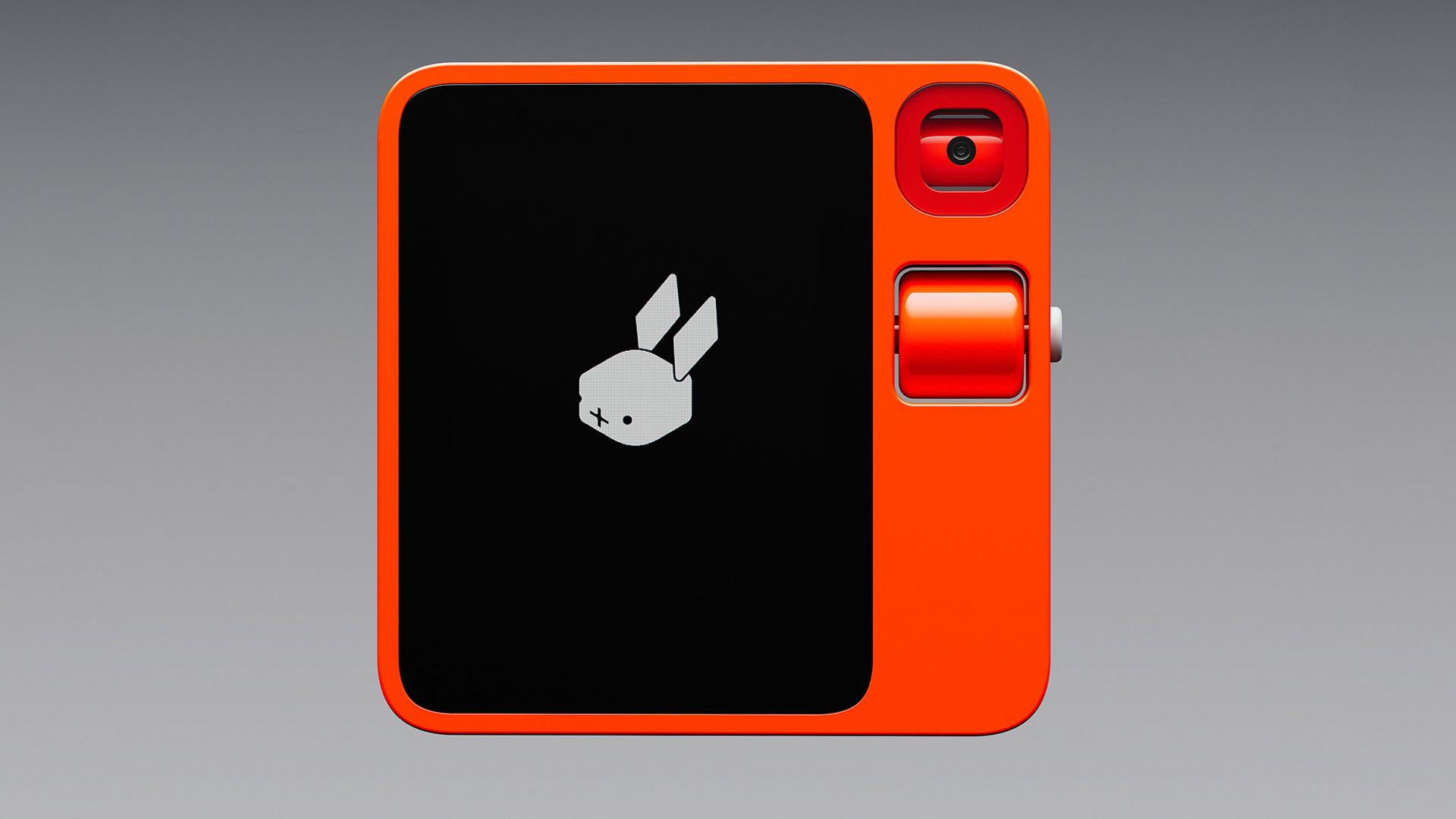Rabbit r1's AI companion is the CES gadget I want to hate but may end up loving
There's something here

Rabbit r1 is the most interesting product of CES 2024 and barely anyone saw it. There was no pre-show buzz, and the launch presentation was delivered on X (the site formerly known as Twitter). However, if you do watch it, there's no denying that the r1 represents the arrival of a new kind of tech: the AI Gadget. The idea is that you can talk to the r1, and it will not only give you information, but can take actions in all the big apps on your behalf, without needing any special integrations. It should, to borrow a phrase, just work.
Speaking of our current mobile technology world, specifically app-driven smartphones, Rabbit Founder and CEO Jesse Lyu declared, "These guys have been around forever and we’ve grown tired of them," and I angrily wanted to call BS. The whole world carries smartphones, relies on and sometimes loves apps. Good luck tearing smartphones out of our cold, dead fingers. Rabbit r1 won't supplant them.
And yet, after watching the 25-minute presentation, I'm convinced there's something here. Yes, the $199 gadget is affordable and even adorable. The bright red finish, palm size, and rabbit avatar icon are all cute and more engaging than they have a right to be. The retro looks carry through to the physical buttons and smallish touch screen – it's a little reminiscent of the PlayDate.
If that were all there is to Rabbit r1, I might declare it a failure before it hopped out of the gate. But it's more compelling than, say, the Humane AI Pin device that asks us to wear an oversized button on our clothes and read projections on our palms. To me, there's nothing inspiring about that.
Rabbit run
Rabbit r1 is taking a different tack. The hardware and its impish looks are just the come-ons for a radically new way of looking at interfaces and human/computer interaction. There is some clunkiness to getting there, but Rabbit r1 does appear to be the first consumer electronics device to tear down operating system and interface barriers to present a holistic human/computer interface.
Leveraging Large Language Models (LLM) to talk to r1 is just part of it, and in the demo, Rabbit OS appeared an able interlocutor. However, it's Lyu's efforts to make the AI action-oriented that offer the most potential.
We all speak to our chatbots but it does take some effort to get what we want because of the need to be so specific. Rabbit understands that an action-oriented AI cannot work unless it understands the systems it's trying to reach.
Sign up for breaking news, reviews, opinion, top tech deals, and more.
Essentially, Rabbit OS and its Large Action Model (LAM) can be the one that knows how every platform (Android, iOS, Windows) works and how the services and apps that run on them operate. If it works as advertised, it takes the buried, multi-layered menu system, and explodes it into a flat plain of possibilities.
What this means is that you can ask Rabbit r1 to take action that cuts across multiple services and accounts: plan a trip that finds flights, hotels, Uber, activities, and maybe a playlist to take on the road. No need to identify each service by name, though you can. Rabbit r1 appears to intuit what needs to be done in each app or service, as a good AI should.
Rabbit rich with info
Naturally, Rabbit demands access to your accounts to build this interface and you would be signing into all of your accounts through Rabbit's web portal. Lyu insists that the sign-in is still on your services and those details are not shared with Rabbit, just how to get things done for you. This will be the diciest bit, and I will reserve judgment but only because I believe this may be the path forward: less time spent on apps and interfaces and more time simply telling an AI chatbot what you want.
The 360-degree computer-vision-aided camera sounds equal parts useful and creepy. At least it's not watching all the time.
AI is everywhere here at CES, but it's often shoehorned into a product or doesn't entirely have a purpose, or perhaps it's another robot AI companion that will require some extra accommodation as it rolls around your home (don't trip over it). Rabbit r1 is just looking for a pocket, touch, and your voice.
The launch and product were reminiscent of another society-altering product: the iPhone (Rabbit r1 launched right around the iPhone's 17th anniversary). It can make calls (though the real-time translation and note-taking is very 2024).
As for how much of the demo was canned, and if promises made now can be delivered in the spring when Rabbit r1 ships, is anyone's guess. (The first 10,000 units sold out instantly, and now Rabbit will take pre-orders for a second production run.) Still, there's no denying that Rabbit r1 has real potential, stole the thunder of just about every other product at CES 2024, and turned my frown upsidedown.
We’re covering all of the latest CES news from the show as it happens. Stick with us for the big stories on everything from 8K TVs and foldable displays to new phones, laptops, smart home gadgets, and the latest in AI.
And don’t forget to follow us on TikTok for the latest from the CES show floor!

A 38-year industry veteran and award-winning journalist, Lance has covered technology since PCs were the size of suitcases and “on line” meant “waiting.” He’s a former Lifewire Editor-in-Chief, Mashable Editor-in-Chief, and, before that, Editor in Chief of PCMag.com and Senior Vice President of Content for Ziff Davis, Inc. He also wrote a popular, weekly tech column for Medium called The Upgrade.
Lance Ulanoff makes frequent appearances on national, international, and local news programs including Live with Kelly and Mark, the Today Show, Good Morning America, CNBC, CNN, and the BBC.